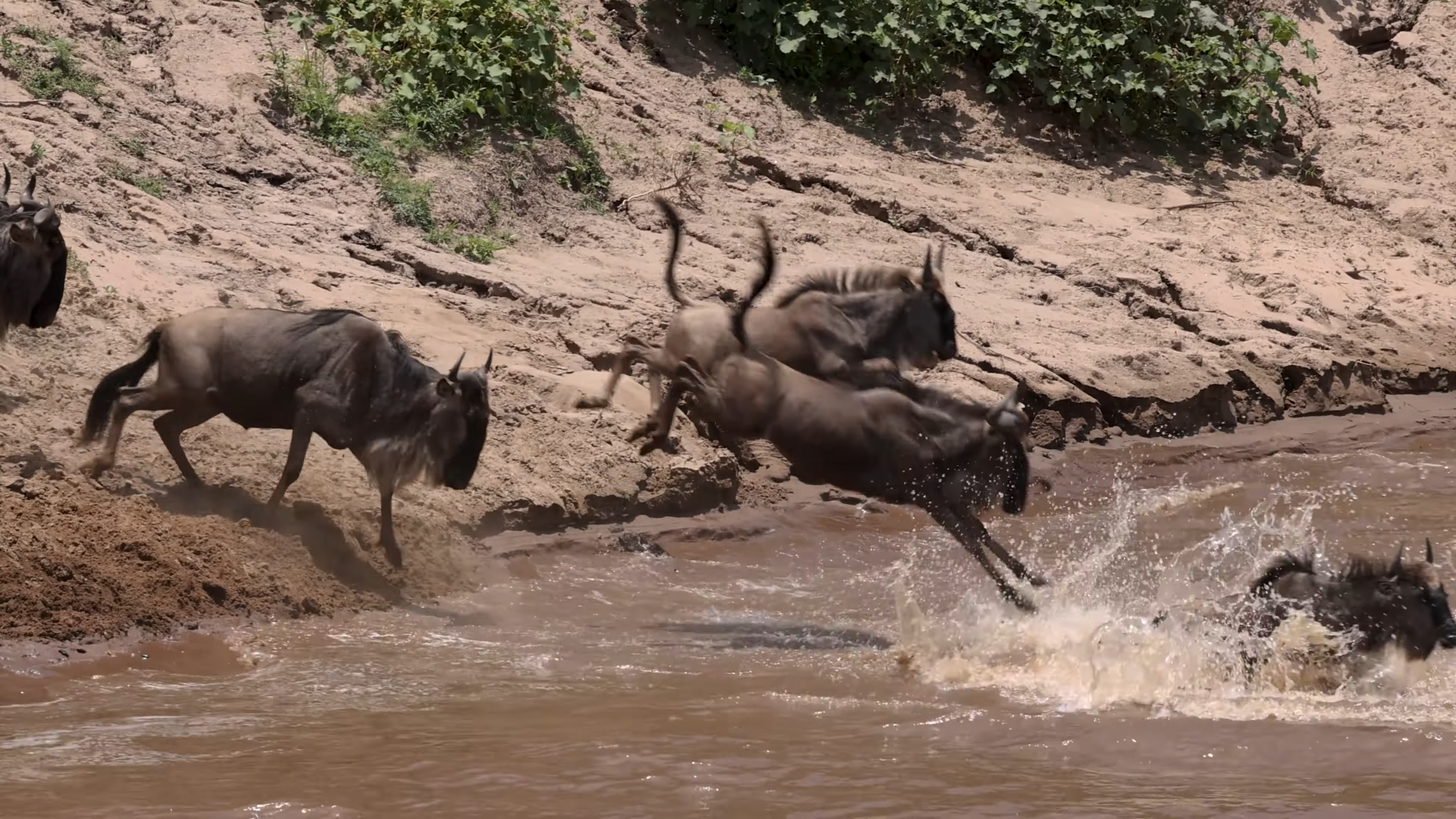Top Secrets for Great Wildebeest Migration: Facts and Budget
A Memorable Adventure
The Great Wildebeest Migration is evidence of the majesty and tenacity of nature. Over two million wildebeest, zebras, and antelope travel across East Africa each year for this spectacular show, which draws tourists from all over the world. We bring you closer than ever to this magnificent phenomenon on a Great Wildebeest Migration with us, giving you an exclusive front-row seat to one of nature’s finest displays.
Comprehending the Magnificent Great Wildebeest Migration: An Outstanding Life Cycle
The Great Wildebeest Migration is a continual cycle of migration rather than a straight voyage, driven by the climate of East Africa and the animals’ search for new grazing areas.
Seeing this in action is a rare chance, but it’s also intriguing to learn about the dynamics of the journey.
Exploring the Epic Great Wildebeest Migration Journey
Around December, when the rainy season officially begins, the expedition starts in Tanzania’s Serengeti National Park’s southern plains. During this time, hundreds of thousands of wildebeests give birth, and as the herds repopulate, they start to go north and then west in search of better pastures.
By July, the herds had reached the Grumeti River in the Serengeti and the Mara River, which divides Tanzania and Kenya. Seeing the wildebeest brave dangerous currents and crocodiles hiding in their shadows during these river crossings is one of the most exciting sights.
The herds spend some time in the lush plains of the Maasai Mara National Reserve after crossing the Mara River, and then they return to the Serengeti to finish the cycle.
Great wildebeest migration crossing the Mara River between Masai Mara and Serengeti (Kenya-Tanzania)
When it comes to planning a Serengeti safari, witnessing the Great Migration is a must-see event. This incredible spectacle involves the annual migration of over two million ungulates, including wildebeest, zebra, gazelles, and eland, across Serengeti National Park. This is not only the greatest wildlife spectacle in Africa, but also one of the most extraordinary in the world.
While there are no guarantees as to when the migration will occur, it follows a reasonably predictable annual cycle, which is dictated by local rainfall patterns. The migration cycle breaks up into two periods: December–April and May–July.
During December-April, the wildebeest move to the area southeast of Seronera, where they give birth to their offspring and stick around until the end of the long rains in late April or early May. This is the best time to visit, as the landscape becomes lush and the area is easily accessible. As there are so many wildebeests, zebras, and other ungulates, predators are drawn to the area. Seeing the actual migration during this period is more challenging, but you will still encounter large herds on the move.
May–July is the most exciting period to witness the migration. After feasting on the short green grasses of the southeastern Serengeti and giving birth to their offspring, the wildebeest start getting ready for their 800-kilometer-long trek. The best time to witness this incredible phenomenon is between late April and early June, when more than a million animals march in a column up to 40 kilometers long. During the migration, the herd heads towards the Western Corridor, where they face their first major obstacle, crossing the Grumeti River. Many animals do not survive the crossing, as they are at risk of being eaten by the area’s population of oversized crocodiles. The herd may congregate on the southern bank of the river and stay there for up to two weeks before crossing, providing ample opportunity for sightings.
In summary, the Great Migration is an incredible event that should not be missed. While no one can guarantee when it will occur, understanding the annual migration cycle provides the best opportunity to witness this awe-inspiring natural phenomenon. So, pack your bags, plan your trip, and get ready to experience the wonder of the Great Migration in person!
From July to August, the Great Migration crosses the Mara River, which is a significant hurdle for the herd. You may recognize this as the location of many iconic photos of the migration. After crossing the Mara River, the herd moves further north to the northwest plains and Masai Mara National Reserve in Kenya. However, around half of the herd remains on the Tanzanian side, in the Mara Serengeti area. In August and September, smaller herds of wildebeest frequently cross the Mara River back and forth for no apparent reason. This is a great opportunity to stay at one of the Serengeti Mara camps.
The herd needs to cross the Mara River once more before beginning the journey back in a southerly direction, usually in October. In this period, they cross the northern plains and Lobo area, which is less visited than other parts of the park. Late November sees the wildebeest returning to the short-grass plains and calving ground around Ndutu, and the Great Migration starts anew.
Our Featured Safari Options
Four-day Wildebeest Migration Safari

Highlights: Exceptional lodging & camping | Game Drives | Wildebeest migration
Destinations: Arusha | Serengeti National Park
11-Day Tanzania Fly-in Affordable Tours

Highlights: Exceptional lodging & camping | Game Drives | Wildebeest migration
Destinations: Arusha | Tarangire | Lake Manyara | Serengeti National Park

